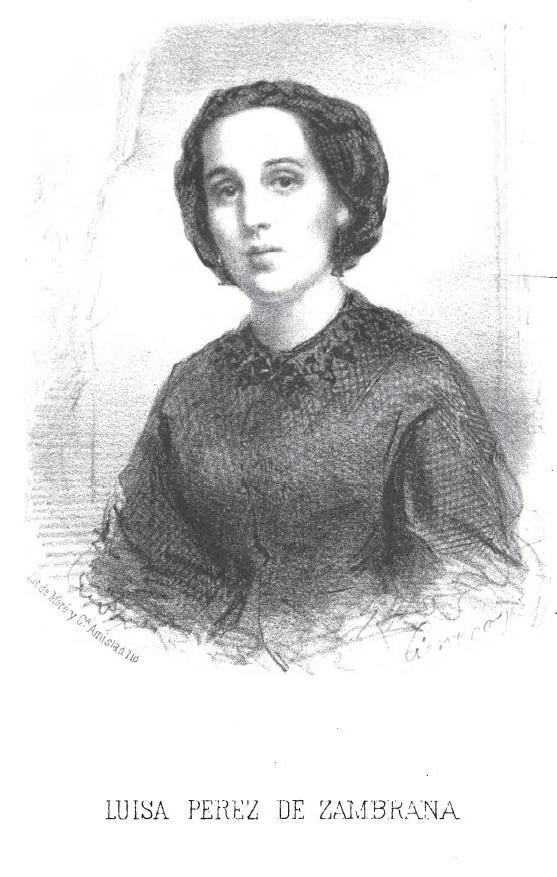2.1.12 The poetic work of Luisa Pérez de Zambrana (1835 – 1922)

Luisa Pérez de Zambrana is an example of the lyrical simplicity that characterized the second Romantic generation, which reacted against the excessive rhetoric of the first period. Unlike Gertrudis Gómez de Avellaneda, who received the praise of her contemporaries, Luisa Pérez was more admired for her cordial demeanor, her fidelity to her husband, her kindness toward her neighbors, and other personality attributes that stood out in the social circles in which the author moved.
His work, although not disdained, did not conform to popular taste due to its simplicity and even the colloquial tone that would later become so strongly anchored in Cuban poetry. This does not detract from its superior stylistic treatment, evident in the modifications observed in the same poems in successive editions.
The contrast between the height of her artistic language and the modest education she received within her family is intriguing. Although she certainly did not focus on great philosophical themes, she did focus on nature, first as a protective matrix and later, as a result of the helplessness faced by the tragedy that always haunted her life, especially after the death of her husband and other relatives, including her children, to many of whom she dedicated moving elegies, essential in the country’s lyrical history.
One of his best-known poems, “To my friend AL,” reveals the essence of his ethical and aesthetic concepts:
“He paints a rather leafy and fresh tree
Instead of a pedestal, I am now in its shadow
sitting with a book in her hands
and the forehead gently tilted
on its rich pages, reading
with deep attention; do not surround me
of doves, laurels or roses,
but of fresh and silent grass;
and instead of the splendid crown
just put it on my straight hair
just a flower, which is more appropriate
to my naive and poor head
the flowers that the laurels”
In addition to the freshness of the landscape and the perfect accommodation the author finds on her lap, under her protective shade, the antithesis she establishes between her “poor” mind and the “rich” pages of the book on which she focuses all her attention is also striking. The idea of being a “servant” of poetry, rather than using it to elevate oneself or achieve some social purpose, is already latent here.
Luisa Pérez also condemned the social inferiority of women, but only in the field of literature because, unlike Avellaneda, her lifestyle did not violate the prevailing rigid social morality.
Her long life allowed her to witness much of the process of national formation, the struggles to achieve independence from the Spanish colonial yoke, and the frustration of the republic; but even when some of her pieces glossed over these topics, they did not move her most intimate fibers, and she remained outside the libertarian impulse, somewhat isolated from the aspirations of the society of her time. Her poetry was immersed in personal and family themes, which carried a sharp pain that is intuited despite a certain expressive modesty, and are entirely due to the authenticity and even naiveté with which she expressed herself.








